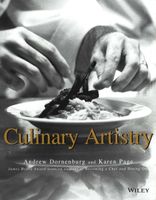Advertisement
Borrowing from the Classics
Appears in
By Andrew Dornenburg and Karen Page
Published 1996
Where is the line between copying and finding inspiration in a cuisine? And how far can that line be pushed? Chris Schlesinger points out, “My food, while not exact duplication, is true to the flavors and ingredients of the culture that inspired it. If a dish is inspired by a dish that I had in Thailand, for example, it won’t have any ingredients that can’t be had in Thailand, and it won’t have any flavors that don’t exist in Thailand.
“I feel that cooks have an obligation, if they’re inspired to borrow from another culture, to have some knowledge of it, some appreciation for it, and some respect for the integrity of the flavors and the ingredients. I don’t believe that cooks should ever combine two totally unconnected ingredients, like soy sauce and tortillas, for example. If you want to combine two ingredients like that, you can find tortillas in the Chinese culture—in the form of moo shu pancakes, for example. In a lot of cases, if you look hard enough, you can generally find something within a single cuisine. Why call something an Indian salsa, when they have something like a salsa called a chutney? Or why call something an Asian salsa, when they have something like a salsa called a sambal?”

